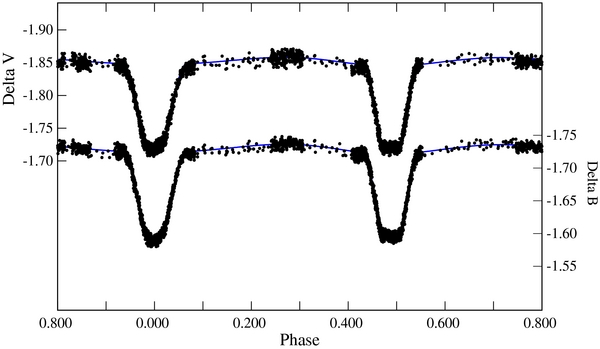
 |
The light curve of the eclipsing binary VV Corvi (HR 4821) is scaled in magnitudes in yellow light on the left and in blue light on the right. The "phase" on the lower axis is the fraction of time covered over the full orbital period of 3.144536 days. Each star eclipses the other once over the full period, yielding two minima of a couple tenths of a magnitude. With velocity data we can determine a wide range of stellar properties. (Light curve from a paper by F.C.Fekel, G.W.Henry, and J.R.Sowell in the Astrophysical Journal, vol. 146, December 2013.) |